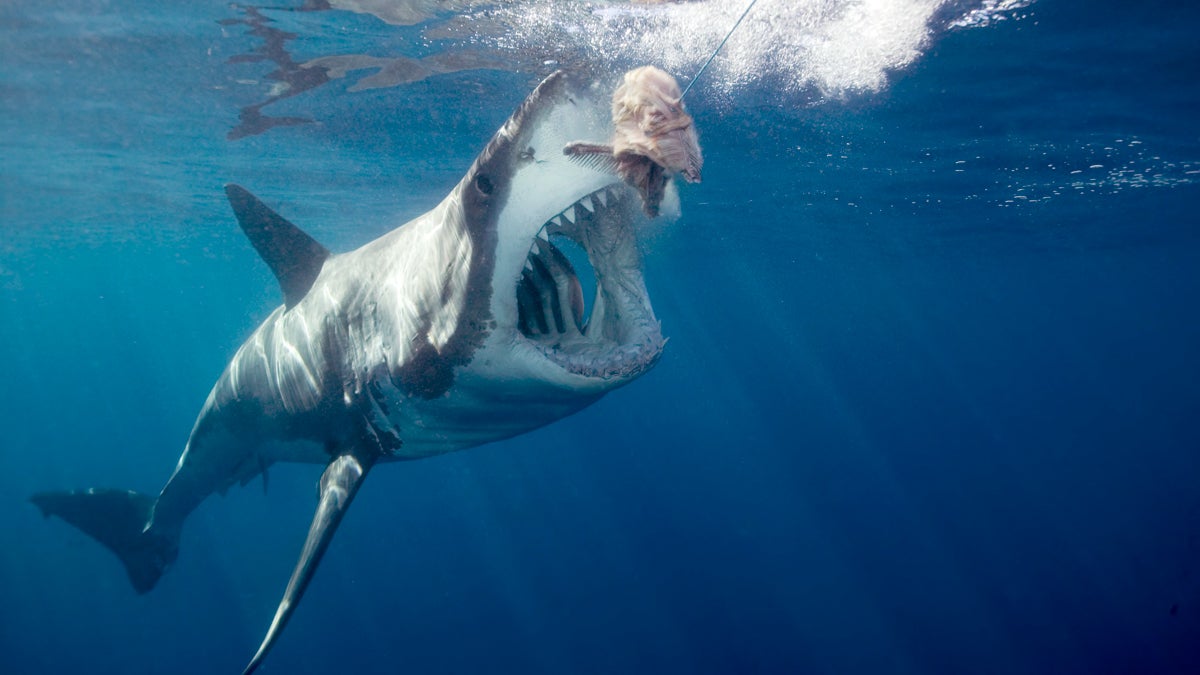If sharks had a tooth fairy, they’d be ‘rolling in dough’
Listen Photo via Flickr)" title="Great white shark arching body and opening mouth for bait (wide-angle)" width="1" height="1"/>
Photo via Flickr)" title="Great white shark arching body and opening mouth for bait (wide-angle)" width="1" height="1"/>
A great white shark opens its mouth for bait. (Photo via Flickr)
Unlike humans, who only get two sets of teeth, sharks can have up to 20 rows of spare teeth stored in their jaws. They lose and replace hundreds of teeth over the course of their lifespan.
“Because they need those teeth that are razor sharp, as soon as these teeth dull, they’re replaced by newer, sharper teeth that are lying in reserve,” says Matt Kolmann, a biologist and researcher at the University of Washington.
But that’s not the only thing unique about shark mouths.
Human jaws are very much a part of the skull; our upper jaw is fused to the skull entirely, and our lower jaw is fused on both sides. This allows us the movement we require to chew, and that’s about it.
“But the upper jaw in sharks is not fused to the skull. It hangs down and it’s supported by other skeletal parts. And while either side of your jaw is fused at the chin, sharks have a joint there that allows them to sort of flex the jaws at that point. So this makes shark jaws very dynamic, very flexible.”
Kolmann says this flexibility of the shark jaw and skull allows sharks to shoot their mouths forward away from their heads in order to engulf the fish, birds, and marine mammals that make up their diet.
“We call this jaw suspension. And much like a suspension of a car, where the wheels are supported separately from… the body… the jaws from sharks and rays are a separate part from the rest of the skull and can move independently…”
It’s these abilities that, in part, have allowed sharks to survive as a species for over 400 million years.
WHYY is your source for fact-based, in-depth journalism and information. As a nonprofit organization, we rely on financial support from readers like you. Please give today.



